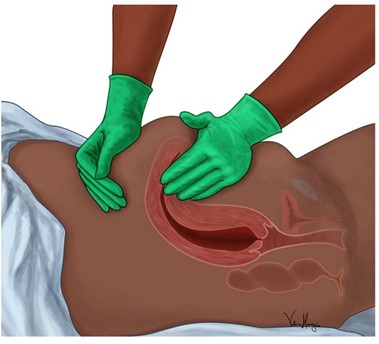The practical nurse (PN) notices that one of the unlicensed assistive personnel (UAP) working in the long- term care facility consistently records subnormal temperatures when using a tympanic thermometer.
Which action should the PN take first?
Demonstrate how to use the equipment
Observe how UAP obtains temperatures
Show UAP how to chart temperatures
Return the thermometer for recalibration
The Correct Answer is B
b) Observe how UAP obtains temperatures - Correct Answer
This is the first action the PN should take when noticing that the UAP consistently records subnormal temperatures when using a tympanic thermometer. Observing how the UAP obtains temperatures will help the PN identify any errors or problems with the technique, equipment, or documentation. The PN can then provide feedback and guidance to the UAP to ensure accurate and reliable temperature measurements.
a) Demonstrate how to use the equipment.
This is not the first action the PN should take when noticing that the UAP consistently records subnormal temperatures when using a tympanic thermometer. Demonstrating how to use the equipment may be helpful, but it should be done after observing how the UAP obtains temperatures and determining the cause of the discrepancy.
c) Show UAP how to chart temperatures.
This is not the first action the PN should take when noticing that the UAP consistently records subnormal temperatures when using a tympanic thermometer. Showing UAP how to chart temperatures may be necessary, but it should be done after observing how the UAP obtains temperatures and verifying the accuracy of the data.
d) Return the thermometer for recalibration.
This is not the first action the PN should take when noticing that the UAP consistently records subnormal temperatures when using a tympanic thermometer. Returning the thermometer for recalibration may be required, but it should be done after observing how the UAP obtains temperatures and ruling out any human or environmental factors that may affect the readings.
Nursing Test Bank
Naxlex Comprehensive Predictor Exams
Related Questions
Correct Answer is C
Explanation
Choice A rationale:
Domestic violence assistance is an important topic, but it falls under secondary and tertiary prevention rather than primary disease prevention, which is the focus of this community outreach program. Primary prevention aims to prevent the disease from occurring in the first place, while domestic violence assistance addresses an existing issue.
Choice B rationale:
Blood pressure screening is valuable for early detection of hypertension, but it also falls under secondary prevention. Primary prevention focuses on preventing the onset of diseases through measures such as immunizations, health education, and lifestyle modifications.
Choice D rationale:
Outreach for support group information is essential for clients with chronic conditions or specific needs. However, it is not primarily related to preventing diseases at the population level, which is the primary goal of this community outreach program. This topic may be more relevant to secondary and tertiary prevention efforts.
Correct Answer is D
Explanation
The correct answer and explanation is:
d) Massage the fundus and avoid direct pressure on the cesarean incision.
This is the best action to take for a client who experiences a sudden gush of vaginal blood and clots after a
cesarean section. Massaging the fundus helps to stimulate uterine contractions and reduce bleeding.
Avoiding direct pressure on the incision prevents pain and wound dehiscence.
a) Insert an indwelling catheter to empty the bladder and contract the fundus.
This is not the first action to take for a client who experiences a sudden gush of vaginal blood and clots after a cesarean section. Inserting an indwelling catheter requires a physician's order and may cause discomfort and infection. The client may already have a catheter in place after the surgery.
b) Check fundal consistency and continue to monitor the lochial flow amount.
This is not enough to do for a client who experiences a sudden gush of vaginal blood and clots after a cesarean section. Checking fundal consistency and monitoring lochial flow are important, but they do not address the cause of bleeding or prevent further blood loss.
c) Return the client to bed and maintain bedrest until the lochial flow slows.
This is not appropriate for a client who experiences a sudden gush of vaginal blood and clots after a cesarean section. Returning the client to bed and maintaining bedrest may delay ambulation and increase the risk of thromboembolism. It also does not stop the bleeding or treat the underlying cause.

Whether you are a student looking to ace your exams or a practicing nurse seeking to enhance your expertise , our nursing education contents will empower you with the confidence and competence to make a difference in the lives of patients and become a respected leader in the healthcare field.
Visit Naxlex, invest in your future and unlock endless possibilities with our unparalleled nursing education contents today
Report Wrong Answer on the Current Question
Do you disagree with the answer? If yes, what is your expected answer? Explain.
Kindly be descriptive with the issue you are facing.
